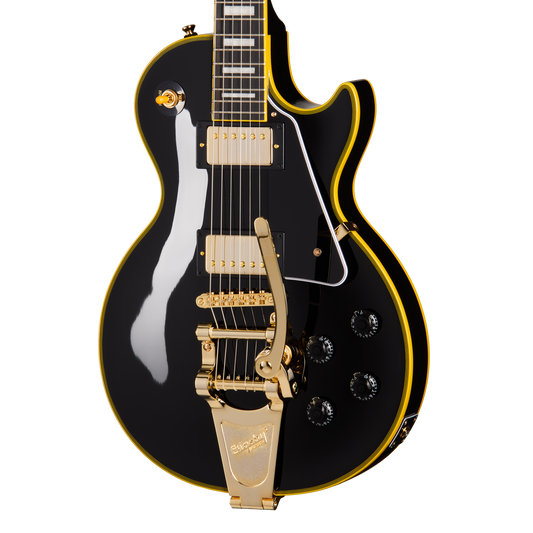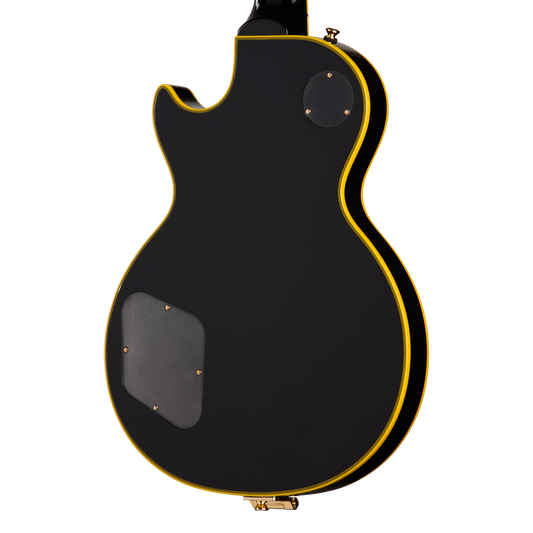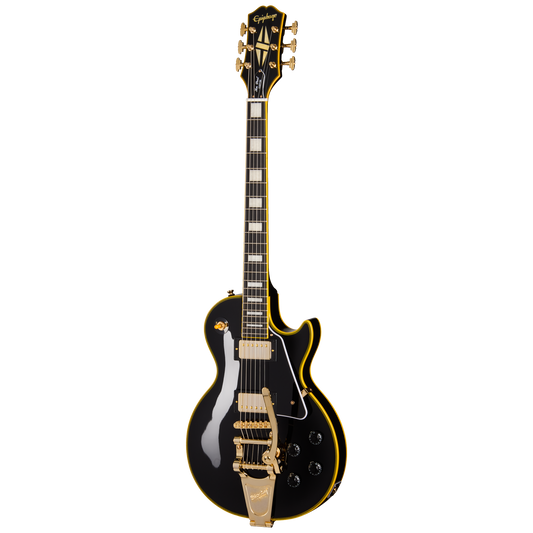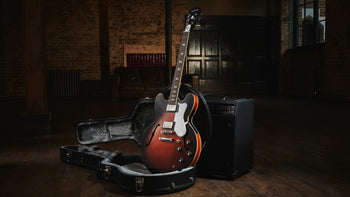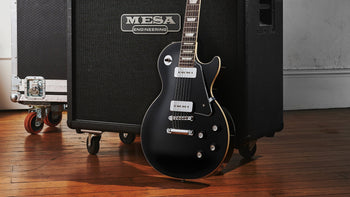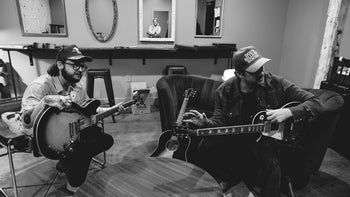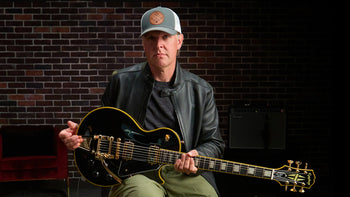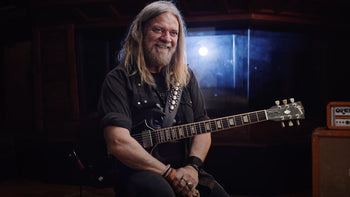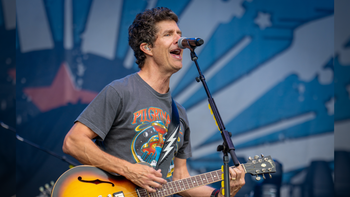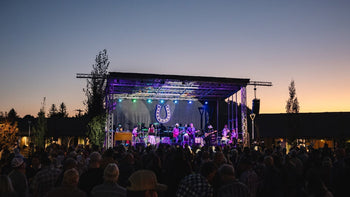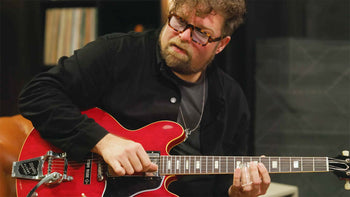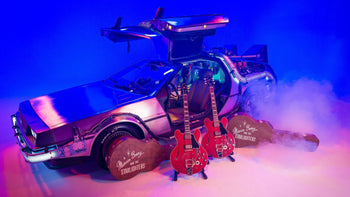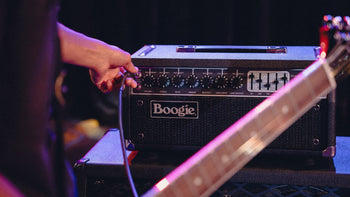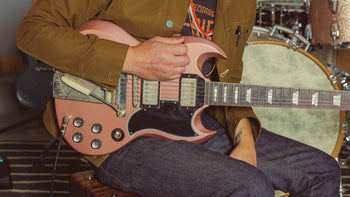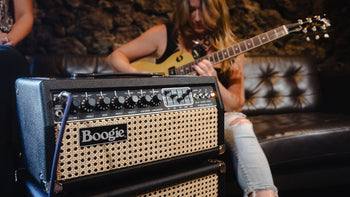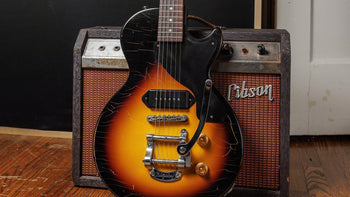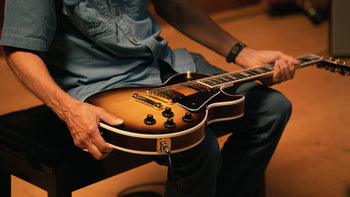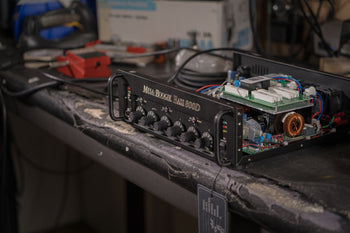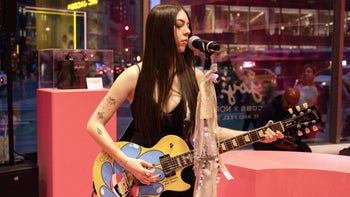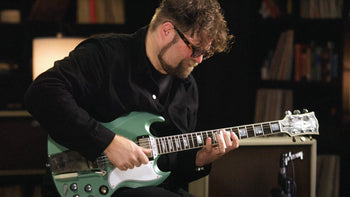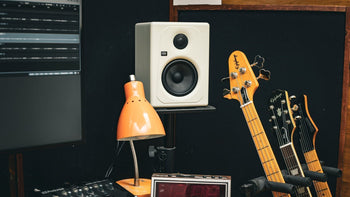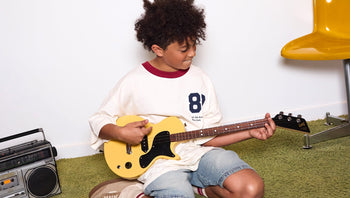Joe Bonamassa sits down with Gibson Gear Guide Host Dinesh Lekhraj to unveil his new Epiphone ’59 Les Paul Custom and dishes out some priceless guitar advice
Recently, we were lucky enough to have the incredible Joe Bonamassa back on the Gibson Gear Guide couch for a third time. On this occasion, Joe introduced his new Epiphone Joe Bonamassa ’59 Les Paul™ Custom signature model , which is inspired by his own extremely rare two-pickup 1959 Gibson Les Paul Custom (most vintage originals had three pickups—two was a custom order).
This Epiphone version mirrors the vibe and looks of the original, complete with Grover® Imperial™ tuners and a Bigsby® vibrato tailpiece, and comes loaded with Epiphone ProBucker™ Custom pickups and CTS® potentiometers. In addition to showcasing the guitar, Joe also drops some uselful advice that every guitarist needs to hear.
Bonamassa walks us through a brief history of the Les Paul Custom, and delivers practical, stage-proven advice on everything from top wrapping techniques, to using a Bigsby, to the best way to play with other musicians. “You want to surround yourself with musicians who are better than you,” he says. “You've got to read the room.”
If you’re watching from the Gibson Gazette, the timestamps are below.
- 0:00 Joe Bonamassa’s best quotes
- 0:28 Joe Bonamassa plays metal
- 1:23 Joe talks about his Epiphone Joe Bonamassa 1955 Les Paul Standard
- 2:40 Joe introduces his Epiphone Joe Bonamassa ’59 Les Paul Custom
- 3:45 Why Joe loves a Bigsby vibrato
- 4:35 The benefits of a Bigsby tailpiece
- 5:08 The story of Joe’s original 1959 Gibson Les Paul Custom “Black Beauty” and his new signature model
- 7:40 A brief history of the Gibson Les Paul Custom
- 11:06 Exclusive models
- 11:40 Quality control at Epiphone
- 12:22 Joe Bonamassa’s top wrapping trick and advice for guitar setups
- 21:00 Reading the room as a guitar player
- 22:45 Your greatest asset as a guitarist and gig etiquette
- 26:43 Joe Bonamassa’s Eric Johnson trick
- 30:55 How Joe sets his amplifier based on his guitar
- 34:30 How Joe chooses guitars for playing live
- 37:56 Playing with Reese Wynans and his band
- 43:00 The character Joe plays onstage
- 45:00 A tribute to B.B. King’s 100th birthday, Blues Summit 100
Joe’s new signature model is based on a two-pickup Black Beauty
Joe’s new signature model is based on a two-pickup Black Beauty—one of the rarest guitars in Gibson history, made in the late 1950s. “There are probably fewer than 20 original 1950s two-pickup Les Paul Customs, ” he explains, making this Epiphone recreation more desirable for collectors and players alike. Modeled on his own ’59, the guitar captures everything from the ebony fretboard snap to the livelier, slightly hi-fi character of a Bigsby. “They do sound different than a stop tail—a little brighter,” Joe notes. But the best part? “It does the exact same thing, for a fraction of what an original costs.”
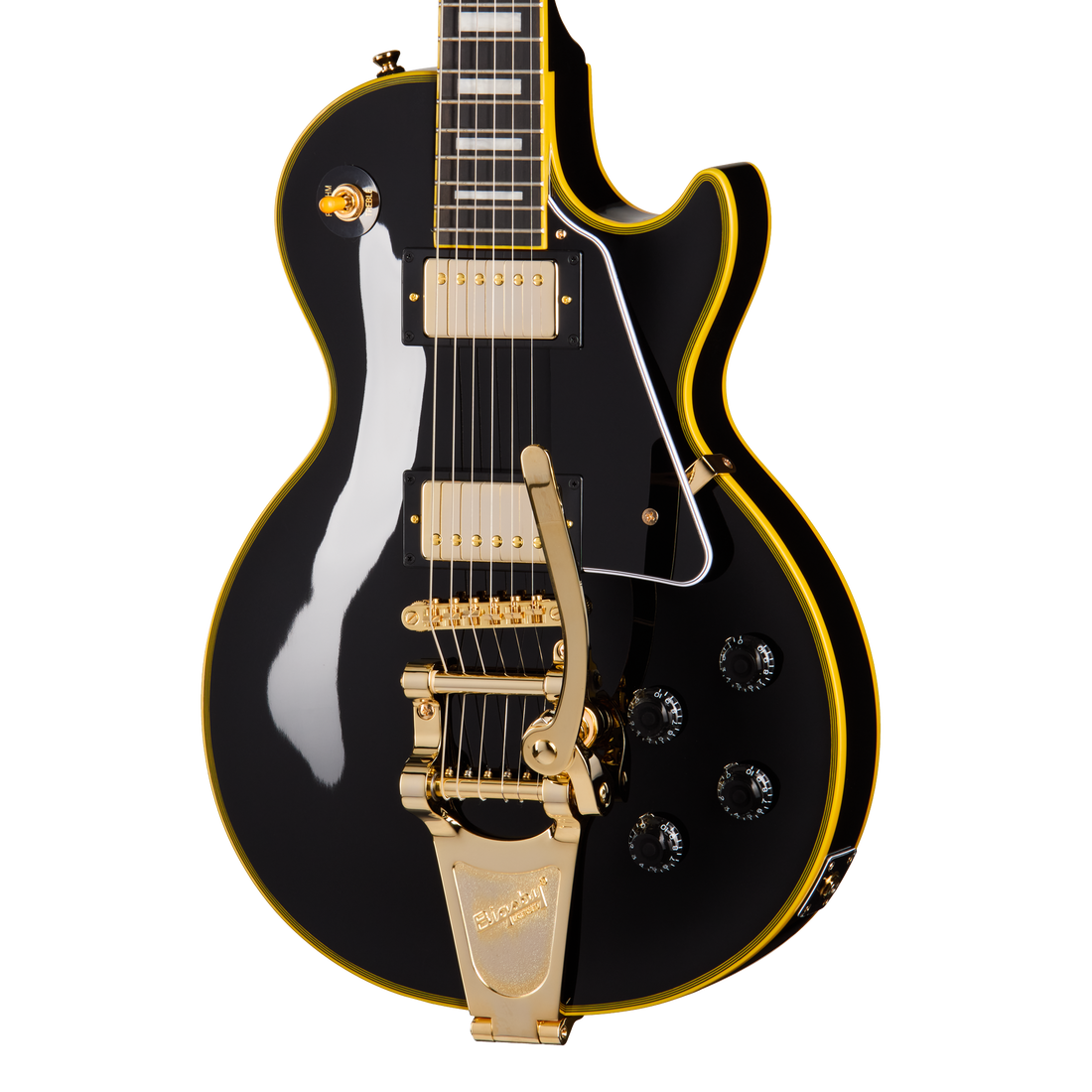 Epiphone Joe Bonamassa ’59 Les Paul Custom
Epiphone Joe Bonamassa ’59 Les Paul Custom
Joe’s Les Paul top-wrapping tricks and simple guitar setup techniques
Bonamassa also shares his trick for top-wrapping the strings over the tailpiece of a Les Paul. “I like the bridge studs all the way down,” he explains. “With a top-wrap, my 11s feel like 10.5s.” Guitarists, including Joe, feel that this subtle change eases string tension, makes bends smoother, and delivers a more responsive feel under the fingers. We covered it extensively in our complete guide to top wrapping . Here’s how Joe recommends you top wrap your Les Paul:
- Instead of feeding the string through the back of the stop tailpiece as you normally would, feed it through from the front of the tailpiece, closest to the bridge, then bring it over the top of the tailpiece.
- Wrap it forward and across the bridge saddle before heading up the neck.
This changes the break angle and reduces string tension, while still allowing you to screw the bridge down flush against the body. Bonamassa believes that the trick can impact feel and tuning stability in a positive way.
Why less amp gain is better
If there’s a secret to Bonamassa’s clarity at speed, it’s not what some expect. “It’s easier for me to play fast clean,” he explains. He prefers amps with lower overall gain and a quick recovery. “I need the note to come back and be ready for the next one,” he says. “If an amp is too squishy, I’m out of business.” He cites influences that shaped his playing, emphasizing articulation and timing over relying on compression. The result is solo tone that stays musical and defined, from guitar to guitar.
The importance of gig etiquette and reading the room
Bonamassa has played with some of the best musicians on the planet, so he knows a thing or two about how to behave when you’re sharing a stage. His advice? Keep it simple. “If you’re getting called up for a jam, called up for one song, there shouldn’t be a tactical technical team in tow with the pedalboard the size of a Fiat. Just plug straight in.”
When multiple guitarists are onstage, restraint is a superpower. “The greatest asset you have on stage is knowing when not to play,” he says. “Leave space. When they point to you, then go for it.” He loves trading lines with friends like Eric Gales, but stresses the importance of keeping solos short and musical: make your point, pass the baton, and always serve the song first.
Joe points to his guitar while explaining the trick. “The greatest asset you have on stage is right here,” he says, tapping the volume and tone knobs. “See this, that, or that—when somebody else is soloing, these should be off. Leave some space. And when they point to you, then go for it.”
And if you’re wondering how he pulls it off with such confidence? It’s something bit of a stage character. “I’m as shy and as introverted as it gets,” he admits. “But I’m also painfully aware I’m in the entertainment business. My job is to entertain.”
Why playing with superior musicians makes you a better player
“The trick is to surround yourself with musicians who are better than you,” Bonamassa says, tipping his hat to longtime bandmates, including keyboard legend Reese Wynans. “You don’t want to be the best player in the room—be the weak link and you’ll grow.” That mindset keeps his baseline rising, night after night.
A tribute to B.B. King
In the Gibson Gear Guide video, Joe also previews his tribute to the legendary B.B. King, “Blues Summit 100.” An all-star tribute to B.B. King on what would have been his 100th birthday, the forthcoming album was made with longtime collaborator Josh Smith. “Josh Smith and I became very aware of the fact that nobody was doing anything in tribute to B.B. King’s 100th birthday,” Joe says. “So we decided to do a B.B. King all-star tribute record.”
To say the lineup is huge would be an understatement. “We’re talking George Benson. We’re talking Chaka Khan. Derek Trucks and Susan Tedeschi with Michael McDonald… the list goes on and on. Everybody came in, and they delivered for Mr. King.” Throw in friends like Larry McCray, Jimmy Vaughan, Marcus King, and Kingfish, and it’s a 32-track celebration.
Joe also reflects on why B.B. King’s influence was so important to him. “I knew B.B. King 25 years. He was always kind to me, but he was always kind to everyone. How many people in the music business do you know that nobody has a bad word to say about? B.B. King was one of them.”
Watch the full interview now on the Gibson Gear Guide, and check out the new Epiphone Joe Bonamassa ’59 Les Paul Custom and shop now.


